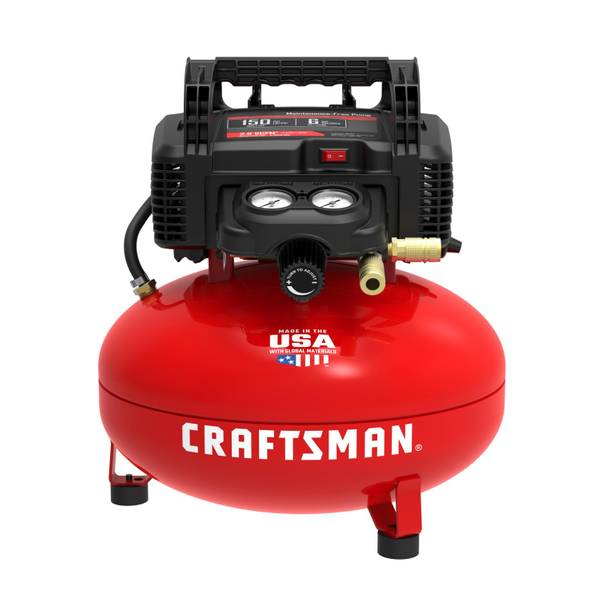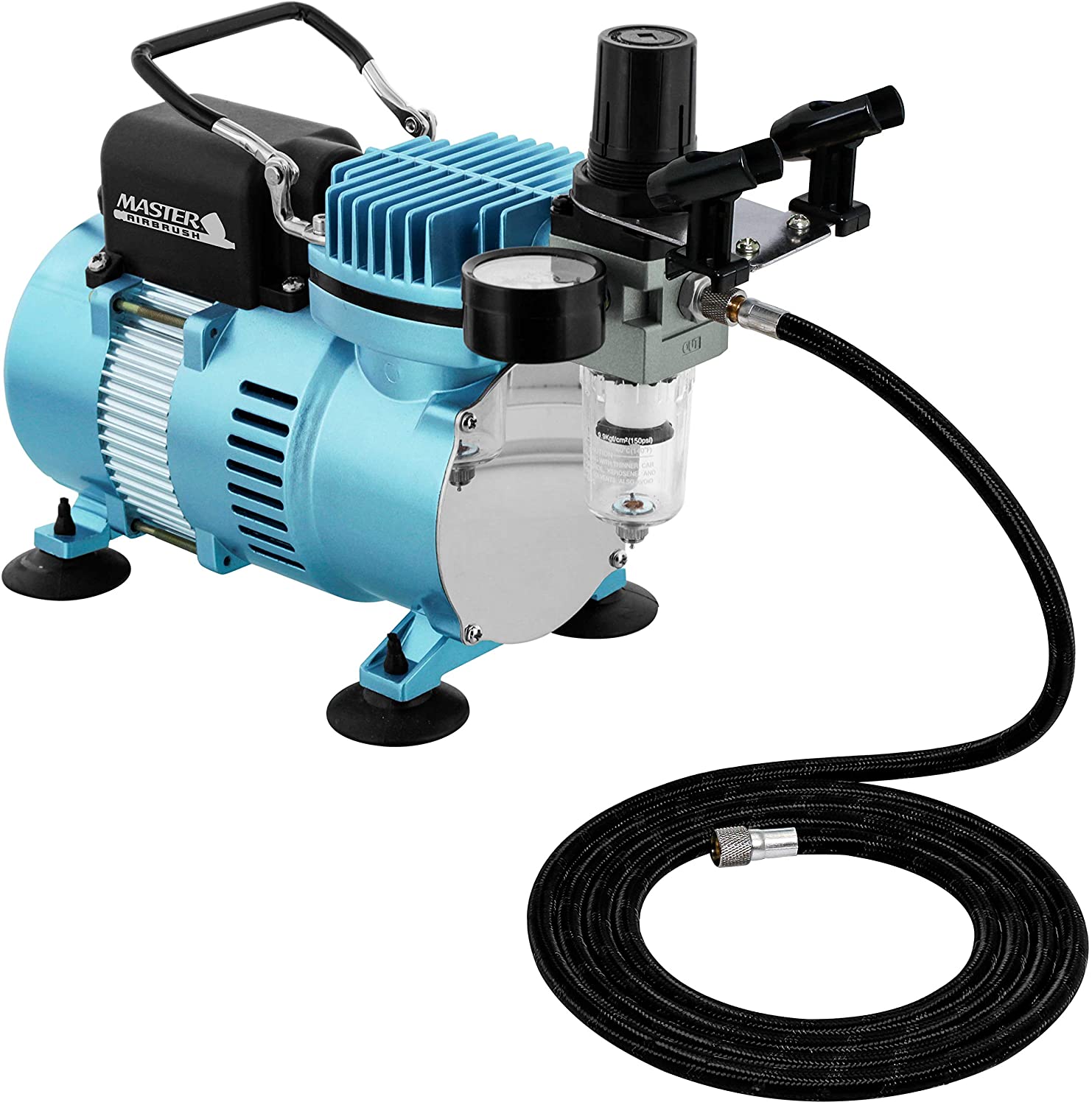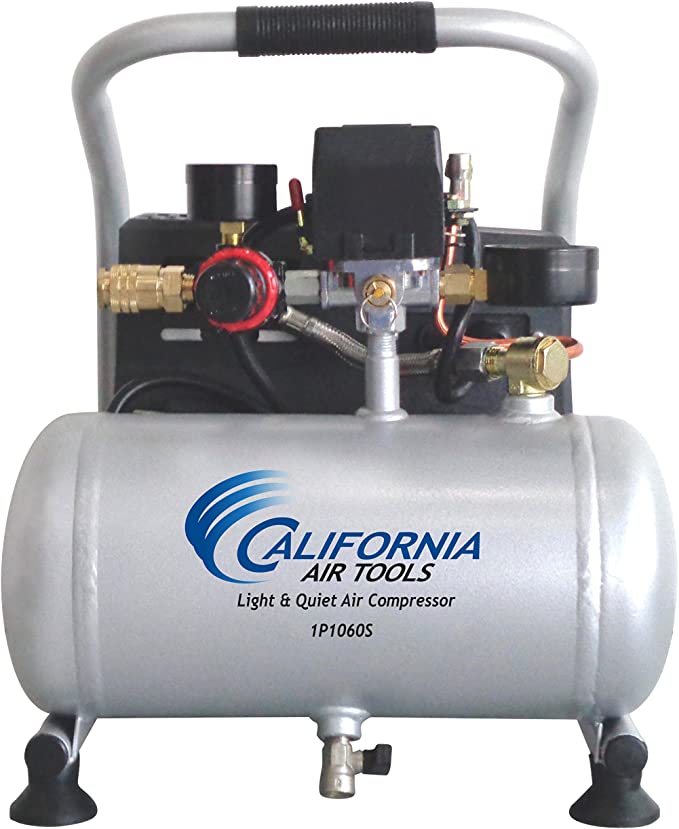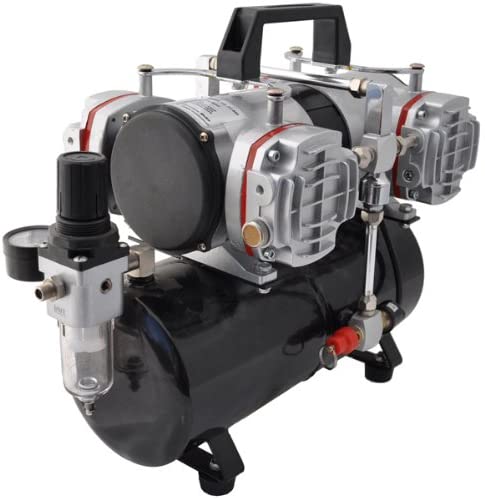Airbrush Compressors
Airbrush Equipment – Compressors
Airbrush compressors are the heart of an airbrushing system. They are used to provide a constant flow of air to your airbrush. The air is supplied from an air tank, which is filled with compressed air. Airbrush compressors create a constant, steady flow of air that is needed by your airbrush to produce fine lines and detailed artwork.

Types of Airbrush Compressors
There are generally three types of compressors: single-stage, two-stage and dual-stage. A single-stage compressor is the least expensive type of compressor. It has one fan that draws air into the tank and pushes it into the hose and out through the nozzle. This type of compressor is fine for light use, but if you are going to use your airbrush regularly or for long periods at a time, it will not hold up well. They are also the quietest of all of the compressor types as they only use one piston to pump air into the tank.
A two-stage compressor has two fans: one that pulls air from inside the tank and pushes it through a filter and into another fan that pushes it out through the hose and nozzle. This type of compressor has better cooling than a single-stage compressor because there are two fans instead of one. The air is also compressed twice, once in a larger piston and then moved to a smaller piston and compressed again.
A dual-stage compressor is similar in design to a two-stage model except that both stages have their own separate motors (instead of sharing one). This means that each stage can be set independently from each other allowing for better control and performance.
Airbrush Compressor Parts
Airbrush compressors come in a variety of sizes and configurations, but they all share the same basic parts:
Motor – The motor is the part of the compressor that is responsible for turning the crankshaft and creating power to run the fan. There are two main types of motors used in airbrush compressors: 1) electric motors and 2) internal combustion engines (ICE). Electric motors are usually smaller and less powerful than ICEs, but they don’t require any maintenance or fuel, so they’re great for hobbyists who don’t want to worry about maintaining their equipment. Internal combustion engines are larger, more powerful units that can provide more airflow than electric motors, but they do require regular maintenance like oil changes and tune-ups to keep them running smoothly. Some compressors come equipped with both types of motors so you can choose which one works best for your application.
Fan – The fan pulls air into the compressor through its intake port(s), which helps increase pressure inside the tank. It also helps push air out of the hose to provide the pressurized air to the airbrush. Some models contain two fans, one for pulling air into the tank, and one for pushing air out to the hose.
Regulator – This allows you to adjust the amount of air being delivered by the compressor, allowing you to control how much pressure is applied to your brush stroke.
Why do you need an air compressor?
The most common reason for using an airbrush compressor is to provide consistent and constant air pressure to your airbrush for applying paint to a surface. Without an airbrush compressor, you would need to supply compressed air from cans or some other source that would be costly, and take up a lot of space. A compressor will ensure that you have a constant supply of paint flowing through your tool while working, so that you can focus on getting the job done rather than worrying about abruptly stopping from a lack of airflow.
Airbrush compressors come in a variety of sizes and configurations, from small portable units designed for home use to large industrial-grade compressors capable of powering multiple airbrushes simultaneously. If you’re planning on working indoors with only one or two airbrushes at once, then an electric compressor should do the trick nicely. If you plan on working outdoors or with several users at once, then an industrial grade compressor is probably your best bet.
OUR TOP PICKS FOR AIR COMPRESSORS

Master Airbrush TC-320
• Good for Beginners
• Single-Stage
• Quiet
• 2 Cooling Fans
• .2 Horse Power

Point Zero
• Good Intermediate
• Dual Piston
• Quiet
• Oil-less
• .33 Horse Power

California Air Tools CAT 1P1060S
• Good All Around
• Lightweight
• 1 Gallon Tank
• Quiet
• 0.6 Horse Power

Master Airbrush TC-848
• 4 Piston
• 78 Liters/Minute
• 1 Gallon Tank
• Quiet
• 0.25 Horse Power
